It definitely isn’t the most exciting part of owning an aquarium…
In fact, surface agitation is often overlooked, especially by beginners.
But that doesn’t change the fact that surface agitation is important!
So today, I am going to teach you everything you need to know about it!
Contents
What is surface agitation?
Have you ever seen a puddle of water that is so calm, still and smooth that it looks like a mirror?
Yeah, like that…
Well, if you added nothing but water to your aquarium, that’s exactly what the surface would look like.
However, if you throw a stone or splash around in the puddle, the surface of the water would become rippled.
In aquariums, this movement of water on the surface of the tank is referred to as surface agitation.
It’s a boring and often forgotten aspect of aquariums, but surface agitation is important for most tanks.
Why is surface agitation so important?
The most compelling argument for surface agitation is self-explanatory…
It oxygenates your water!
As you are no doubt aware, the oxygen that your fish breath works its way down into your tank from the surface…
The bigger the surface area of the tank, the more oxygen can penetrate the water.
Now, ordinarily the water surface area is determined by the size of your aquarium.
A 4 ft x 2 ft aquarium, for example, has a lot more surface area than a small fish bowl.
However…
When you agitate the surface water in your tank, the layer of water that is in contact with the air is constantly changing – the agitation increases the surface area of your tank, even though the physical dimensions of your aquarium are unchanged.
Surface agitation promotes gas exchange – the agitation increases the rate at which oxygen (O2) dissolves in water. It also increases the rate at which carbon dioxide (CO2) is released from the water.
The amount of oxygen in your aquarium plays a major role in determining how many fish you can keep in your tank.
You need enough oxygen to keep each fish alive! The more oxygen in the water, the more fish you can keep!
Surface agitation allows you to keep more fish in the same-size tank.
That’s a pretty convincing argument for surface agitation, huh?
Even if you are not planning on stocking any more fish, there is another added benefit of surface agitation…
It gets rid of that oily film that appears on the surface of still aquariums.
You know, that oil slick that begins to form?
Well, the reason it isn’t going anywhere is because there is no water movement.
Agitating the surface water will help break up the oily film.
Is there such a thing as too much surface agitation?
In most cases, the surface agitation caused by aquarium equipment won’t cause any problems.
However, there are two instances when strong surface movement actually works against you.
1. Your fish
It may surprise you to learn that some fish hate surface agitation or any other water movement.
One of those fish is the Betta splenden (Siamese fighting fish).
I know that many fish stores keep their betta in a tank with an air stone bubbling away, agitating the surface of the water. But this stresses the fish.
In their natural environment, betta live in rice paddies and marshes – water that is very still.
To keep your betta happy at home, you want to replicate the gentle water movement found in its natural habitat.
So, read up on the preferred water movement of your fish before adding any surface-agitating devices.
2. Planted tanks
Remember how I mentioned earlier that agitating the water also increases the rate at which CO2 exits the water?
Well, for planted tank owners who are injecting CO2 into the water, that isn’t necessarily a good thing – you want the CO2 to stay in the water, not leave it.
If you are injecting CO2 into your tank, you want to reduce agitation down to a gentle ripple – so that you are not wasting CO2.
How do you agitate the water in your aquarium?
So, you have decided you want to agitate the surface water of your aquarium.
Here are four simple devices that will do just that!
1. Filter
If your tank already has a filter set up, then you will most likely have everything you need to agitate the surface of your aquarium already.
Hang on back (HOB) filters and under gravel filters both have return lines that cause water movement at the surface of the aquarium, agitating the water.
For canister filters, you need to point the return up towards the surface of the water to agitate it.
Sponge filters use either an airstone or air line to operate. As the bubbles rise to the surface, they agitate the water.
2. Aquarium bubbler
Commonly used by beginners and owners of small tanks, aquarium bubblers offer an affordable means to agitate the surface of your tank.
Simply hook the bubbler up to an good aquarium air pump and insert it into your tank. The bubbler will produce hundreds of tiny little bubbles. As the bubbles rise, they churn the surface of the water.
Popular types of aquarium bubblers include airstones and bubble walls.
3. Power head
A powerhead is essentially a submersible pump that is placed inside your aquarium to boost the water movement.
Water is drawn in through the bottom of the unit and out the top. As the water flows from the return, it stirs the surface of the water.
4. Wavemaker
Essentially a circulating fan, a wavemaker is positioned inside your tank and recreates the water movement of naturally occurring waves in the ocean.
By aiming the fan upwards, the wavemaker is more than capable of agitating the surface water.
5. Spray bar
In its simplest form, a spray bar is little more than a piece of pipe with holes in it.
A spray bar sits on your filter outlet and disperses the water evenly and gently across the surface of your aquarium.
6. Lily pipe
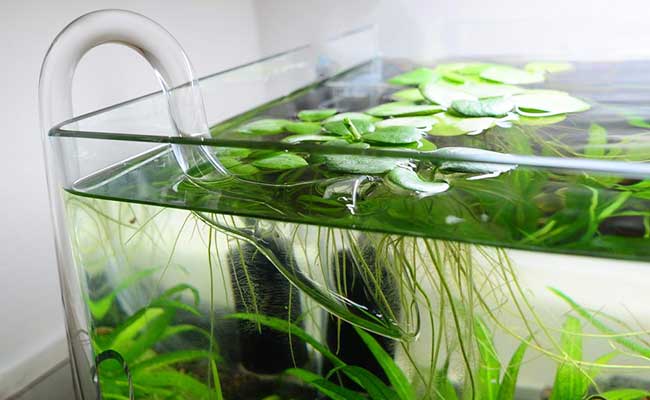
A lily pipe is a flower-shaped glass pipe that sits on the outflow of your aquarium filter.
As water flows through the pipe, it disperses water across the surface of your aquarium, agitating it. Lily pipes that are specifically designed to agitate the surface water are called poppy pipes.
Conclusion
It may not be the most exciting thing you will read about aquariums today, but surface agitation is an important part of fish keeping.
Do you agitate the surface of your aquarium? Let me know your preferred method in the comments below!

Ian Sterling, founder of Fishlab.com, began his aquarium journey over 30 years ago, driven by a deep fascination for fish and their diverse personalities. His website, Fishlab.com, is dedicated to making fishkeeping accessible and enjoyable, offering beginner-friendly guidance, expert insights, and a community for aquarists to connect and share experiences.


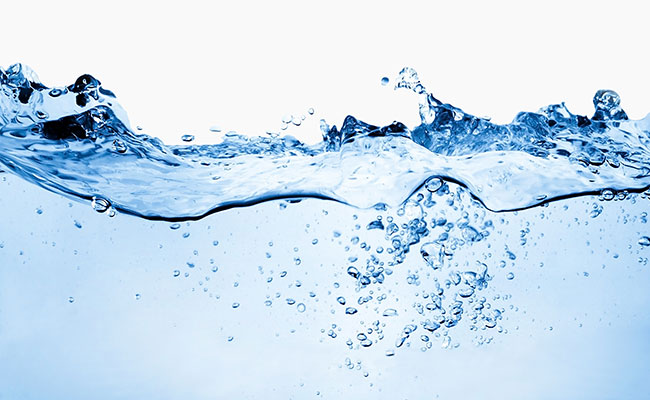
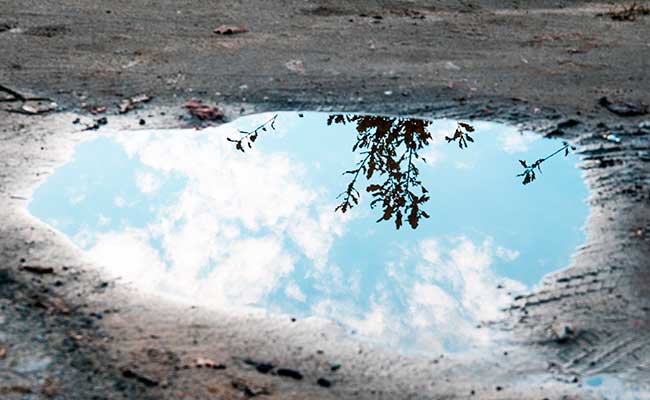
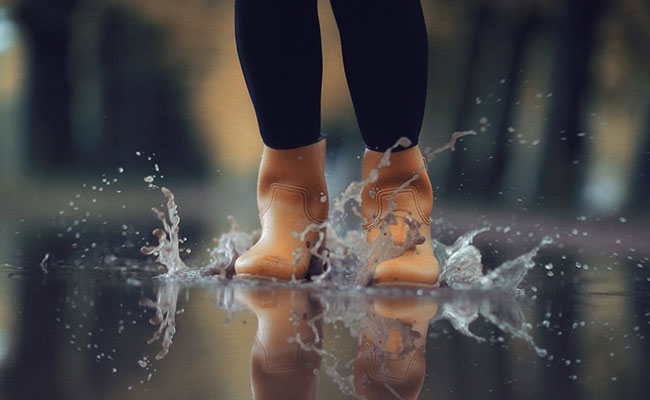
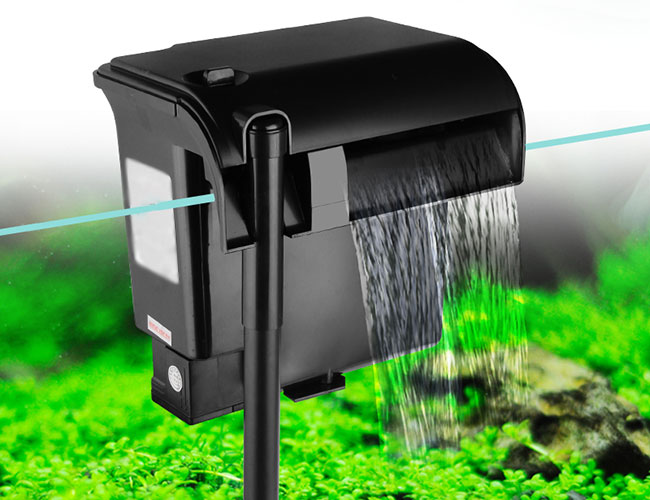
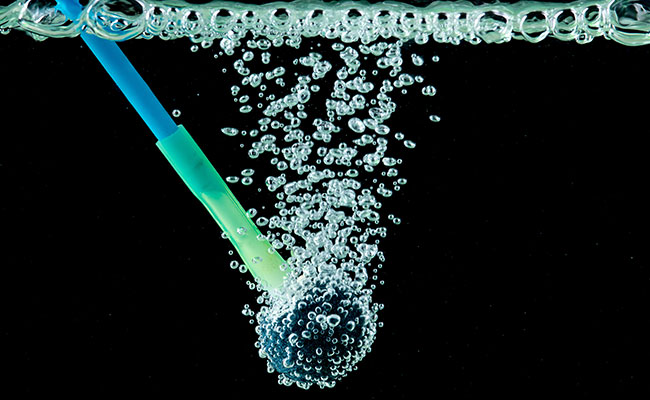
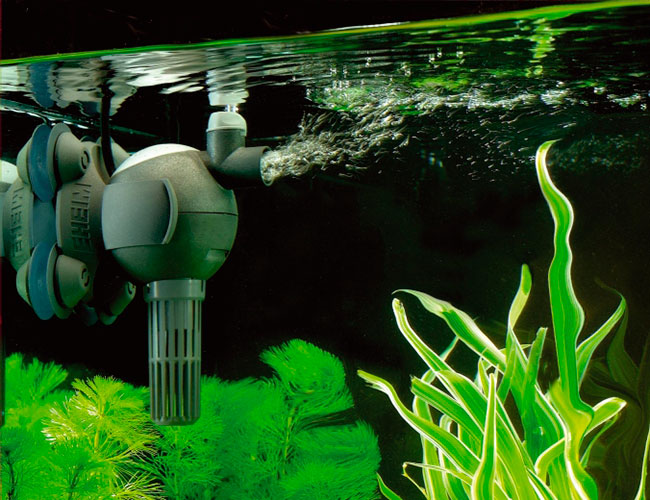

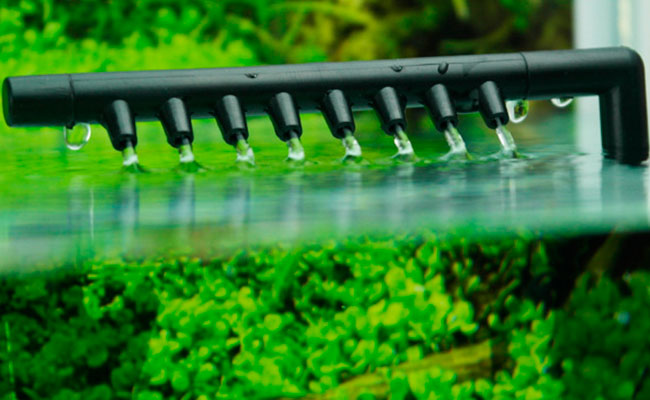
Comments (40)
Very helpful article helped me to solve my problem – no more oil on the surface.
I find your dismissive regard for airstones to be bad advice. I’m sure your point was to have a tank with little fish but more plants and aquascaping. That’s not real fish keeping but preening b*******t.
There are legitimate reasons for having airstones and a lot of fish enjoy the stream. Not to mention it’s nice to know that the fish he to breathe oxygen who don’t have a filter that hangs on the back.
So stow your snobbery.
Hi Christina,
I’m scratching my head on this one… Did we read the same article?
If that was your takeaway from the article, then it would appear that you completely missed the point and have made yourself upset.
I actually recommended bubblers, like airstones, as a way to provide water movement further down the guide.
I merely suggested that an airstone is unsuitable for fish like betta, which prefer calm water. I stand behind this statement.
Christina sounds like she was having a bad day, or is just a total c**t. I’m going with the later.
Thanks for your article Ian, it’s useful information.
Thanks Jason,
You can’t please everyone 🙂
I agree with the author. I see nothing negative about the reference to bubblers nor airstones.
For my tank, however, I simply use extra plastic tubing from my canister filter to move the incoming water across the surface. It is a poor man’s substitute for a lily pipe or poppy pipe. I have the tubing at the water surface. It creates beautiful ripples across the entire tank. The main thing is that the water surface is always moving, mixing with air.
Hi Dave,
That sounds like a great idea. Less breakable than a lily pipe too. Sometimes DIY solutions really are the best!
Hi Ian,
Yeah, I know that some do not like the plastic tubes, but I don’t notice them.
I have used airstones and UG filters in the past, but I don’t like the noise from the air pump. Later, I went to HOB filters, but I found that the biomedia is too small. I now have an Eheim Classic 350, on my 40 G Breeder, and it is great. No noise, good surface current, and my tank has remained stable for weeks–with no water changes. It holds three young fantail goldfish puppies, and some plants.
I appreciate your article on surface agitation. Water ripples are necesary in tanks, as they are in nature.
Thanks!
Dave
A Million thanks, Ian !
You’re welcome, Jon!
Hello. 65 gal cube. Corner flow, sump below and skimmer. I’ve been using 2 powerheads. I aimed one low and one at surface. However, after 2 years I view them as an annoyance. Visually…. I get my shimmer effect from my Kessil. My question. Is this .. I seem to acquire oxygen and gas exchange from my sump and skimmer, and the corner flow would seem to suck/drain surface film… If this is the case. Why point one at the surface? I’m thinking of removing both. And acquiring a cylinder style powerhead and hide it in the corner for the water movement… Your opinion would be appreciated. Thankyou
Hi Chris,
This article was created with beginners in mind, those that just have an individual display tank. An open sump does indeed increase the amount of surface area that oxygen can be dissolved in. In your case you could remove both, however, in the days following, I would be closely monitoring your tank, testing daily, just to see what the effect of removal is. If it’s nothing, you are home clear.
Hello, What about surface agitation in low tech tank tanks? It still gas offs the small amount of co2 or even increase the co2 level in tank?
Hi Ugur,
Welcome to the balancing act that is co2. Ideally you would want enough flow that your water is moving to all corners of your tank and a film isn’t forming on the surface. It can take some trial and error, but you should eventually figure out the right amount for your tank so you are not ofgassing too much Co2
Okay, so I understand the part of bettas hating water flow and plants needing minimal surface agitation to avoid CO2 gas-off. But I’m also under the understanding that water flow is necessary to make sure all the water comes into contact with the beneficial bacteria resting on surfaces, and thereby avoid any like pockets of stagnant water that’s building up ammonia just because there aren’t any surfaces in that particular spot for the bacteria to cling to. Is there a way to get that necessary flow without stressing the fish and/or depriving the plants of CO2, or should I just worry more about one thing over the other rather than trying to balance the two?
Hi Obi,
There is a difference between a slow moving current and massive churning surface agitation. In small to medium tanks, it doesn’t take much to achieve a current that will flow through the entire tank. The majority of your beneficial bacteria will sit in your filter anyway, filtering out ammonia and nitrite as water is drawn in over them.
Hi Ian, what an interesting article on removing surface oil! I have a Juwel 240 curved aq’. Well planted co2 fed through WEIPRO ph controller. Right, down to the problem! It’s been set up for 3yrs now, Filtration is Fluvalu4, co2 is fed by the filter. Water test’s are done every 4th day KH/GH etc are always in the acceptable range. Have had a problem with oil for about a month,NEVER thought about surface movement.. so followed your advice, within 2hrs problem solved. Brilliant, buy the man a pint ????????or 2 thanks
Hi Terry,
I assume you are overseas because you have a Juwel 240. Those are a great little kit. I saw one when visiting the UK and I’m a little jealous we can’t get them here. I’m glad your oil problem was an easy fix! Have a pint for me!
hi Ian!
so…I just want clarification I guess – is the oil slick okay to have in situations were a lack of surface agitation is preferred? or should I be hunting for a way to introduce low surface agitation or otherwise sop it up with paper towels?
I’m a little conflicted with what I’ve been reading. I have a low-tech lightly-planted betta tank (and I’m at the point I am with a lot of help from your advice, thank you so much). I have a sponge on the pump output to diffuse flow for the betta – no surface agitation. my betta’s been making nests off and on, and the red root floaters are growing like crazy, but…I’m also getting the oil slick.
I’ve also got some BGA settling in, and it looks like I’ll have to oxygenate the tank somehow when I start treatment, but that’s overall an aside – I guess I’m trying to figure out if my solution to that will need to be a temporary or permanent one (assuming I can find a happy medium).
Hi Shae,
Ideally, you wouldn’t want any oil slick, as it disrupts oxygen exchange. While betta do have a labyrinth gland and can gulp air at the surface, and prefer slow moving water, the ideal in an aquarium setting is *some* water movement.
The good news is that you don’t need much water movement at all in order to break up this film. Even light bubbles from an airstone can provide enough agitation. It can take some trial and error, but eventually you’ll get the hang of it, keeping both the tank surface oil free and your betta happy!
awesome; I’ll experiment with some things for a permanent solution then.
thanks so much!
Look at the Zoo Med Nano 10 canister filter. I inherited a betta with this type of filter and he was only in a 2.5 gallon tank and it was IMPECCABLE and NO surface agitation. It has the spray bar and you can direct it onto the wall of the tank placing the suction cups up high just below the rim of your tank. OR you can not use the bar and attach this other piece that gently guides the output hose water with a small piece like the glass tube in the picture (plastic not glass and smaller). They have a video on their site about it. I just moved him to a 10 gallon and it’s great. It has mechanical filter through a sponge, carbon option which I never use, and ceramic biological filter. The canister is SMALL and totally silent. It’s awesome for a betta.
Hi Ian, I am coming back to serious goldfish keeping after the old low tech ways 35 years ago and my lord what a confusing carry on reading all the conflicting opinions on the internet, you could spend a fortune on all the fancy gadgets an chemicals for tanks, on the subject we are on I have planned a bubble wall the whole length of my new 4ft tank with a blue led light for a nice look, I used half the setup as it is two half’s in my 2ft tank and observed bubbles travelling all across the surface area of my tank, is this kind of agitation that I am needing or would it be better to have my canister filter spray bar doing the job, this is currently used just under the water surface pointing across to the bottom front of my tank to try and cause a circular current, your advice would be appreciated as I think I could be right and then maybe totally wrong, as a bonus the fish love the bubble wall and play constantly in it.
Hi Graham,
Welcome back to the hobby. I’m sure it would be confronting seeing just how much everything has changed. Fishkeeping is one of those interesting hobbies where it can get very expensive very quickly, but only if you choose to do so. Usually there is a cheaper option or a DIY way that works just as well.
As for your question, if the bubbles are causing the surfacewater to “churn” or “turn-over” then that’s all the agitation you will likely need. As long as your tank is properly stocked, it will likely be more than enough agitation.
Goldfish poop a lot. A canister filter or 2 will keep the tank clean. And with 2 you can have one output moving the surface water and the other output moving water around the lower parts of the tank. As long as you don’t see your fish get pushed around you’re good and your fish will be very happy with all that clean water
I am needing some guidance after reading the posts and listening to other people so help, please ☺️. I have a 55 gallon two foot tall, 48” long aquarium. After many years with over the back noisy filters and lots of complaints from my family who couldn’t hear the TV, we took a big leap last weekend and purchased an Eheim 2017 canister filtration system. We love it, love it, love it!!!☺️. We have had Cichlids for years but we are down to seven and we are going to give those to my niece and try our luck with some young Discus when they come in ~ in a few weeks. The guy at the pet store who is very nice, says with our Cichlids, we need an Air stone. My daughter who is getting “educated about the Discus” says we do not need an air stone. I have read multiple articles on Google and it goes back and forth ~ You absolutely do ~ you absolutely do not ~~ LOL ….. just want to do what is right for my fish. I have the air stone if I DO need it. In addition to all that, I noticed after setting the Eheim filter up on Saturday, that today, (Tuesday), I have a slight film over the top of the tank (no air stone in use) My Air bar with the Eheim is installed vertically rather than horizontally and goes
down into the water ~ so that it wouldn’t show from the side top of the tank. Maybe that’s a problem I don’t know. Your words of wisdom will be greatly appreciated ☺️
Correction, it is a 2217 and I referred to the Spray Bar as an Air bar ~ just like to keep things clear ☺️
Hi Dee Dee,
Your niece is correct. Tanks don’t need an airstone if you have some other way of agitating the surface, as listed in the article above. Generally speaking, some degree of surface agitation is desirable, but it doesn’t have to be from an airstone. There are other methods of achieving the same effect.
The slight film can usually be gotten rid of by pointing your filter outlet at the surface, so that the surface water doesn’t remain still. This breaks down the film and the filter will do the rest.
Film accumulates if you don’t have enough surface water agitation/ movement. Adjust the output flow nozzle upwards more. Wait for the new filter to mature. Discus may survive better if you use reverse osmosis water. Discus tanks look amazing with Cardinal Tetra you in your tank get 50 with those Discus. Any more and you’ll need to do 25% water changes 2 times a week if overstocked. Make sure your filter flow rate is 5-10 times the tank water volume. Get 2 canister filters for extra cleaning power. Discus love very clean water. Clean one filter one week the other the following week in the syphoned tank water. Keep R.O water in a warm place to ensure the water is the same temperature as the tank before adding it on water change day. Get an aquarium heater and put it in the R.O water container just before adding it to the tank. Make sure to cover the heater in a plastic sheath so the glass won’t touch the sides of the container.
Hi,
I have a well established 60 litre tank that is stocked with Tetras and a Pleco. Recently I have added a male Beta and have an issue with my filter setting.
I use a Fluval U2 internal filter that has been running through the top Venturi outlet. This creates air bubbles that break the surface tension. However, I am aware that Bettas like a more calm tank. Should I adjust the filter to the smooth flow setting that agitates the tank less? If I do this, there will be no surface agitation. Will my Tetras be OK, enough gas exchange etc? Also, my tank is planted.
Thanks
David
Hi David,
I think you wrote betta when you meant to say tetra. If your tank is properly stocked, there is less need for surface agitation. My biggest concern here is the pleco. If it’s a common pleco, it will likely produce more waste than the tank can handle (they grow quick too)
You can always slow down the filter so that it makes slight ripples rather than churning the water. In a smaller tank, this is fine as long as it’s stocked correctly.
Male Betta and tetra like slower flow. Pleco like moderate to fast flow. Unless you put a power head at the bottom level of the water column and have plenty of driftwood your Pleco won’t be happy. Plus most Pleco will grow too big for your tank. Also Male Betta can be aggressive. They are also known as fighter fish. They will likely kill other fish in the tank or die trying. For example: Tetra and and honey gourami are good together the gourami pair off but males get aggressive with each other at mating times. So don’t have loads of male gourami. Amano shrimp are good algae eaters if you get 10 in your tank instead of a Pleco it’ll cause less work for your filter. Plus if you want to overstock you need to do 25% water changes 2 times a week and a bigger filter such as eheim canister filters. I have eheim Ecco 200 canister filter on my 60L. I make sure when buying a filter the flow rate per hour is between 5-10 times the size of the tank. If the output flow is too strong then add a rain bar and put a sponge filter sponge round it. A pipe with lots of holes to disperse water evenly around the tank. I have 1 Male beta with 8 harlequin Rasboras and 10 Amano shrimp. Plenty of live plants, only ones that like low light and low c02, in the back allowing swimming space in the front. Fluval plant soil. Seachem c02, & fertilisers. Root tablet fertiliser. Caves for shrimp to hide when the shells are shed. I put the Betta in last when I stocked the tank. Always put the Betta in last. So they don’t get too territorial toward other fish. My Betta is happy which shows because he’s making bubble nests and swims about with out trying to kill his tank mates.
Any idea of where you can find a list of surface agitation liking / tolerating species?
Hi Andy,
Unfortunately, I’m not sure there is a complete list available online. Your local fish store should be able to give you some good suggestions.
So is it the direct surface agitation from the bubbler that’s putting oxygen into the water as opposed to the bubbles of air themselves?
Hi Stuart,
That’s correct, the bubbles do not “oxygenate” the water.
I have a 27 inch tall, 30 gallon fish tank. I’m planning on planting the entire bottom, getting 10 Harlequin Rasboras, 12-14 Cardinal Tetras, and adding my Rosetail Betta. How long does the filter intake pipe need to be? It seems like the pipe that came with my Eheim Classic 250 is too short. Will it clean my tank properly if the intake only reaches to the middle? I need to know if I should purchase something else, but I’m having trouble finding longer intake pipe in the first place. I did find a nice lily pipe inflow with surface skimmer, but the pipe going down is short like the others. Does this matter? Please be so kind to advise what kind of filtration pipes would be best for my tall tank, fish, and plants.
Hi Brandy,
Excellent question! I wouldn’t worry about this. If you have bought the right sized filter for your tank then the intake pipe will be find situated in the middle of your tank. It’s purpose is to clean the water from free-floating gunk. So by being placed “roughly” in the middle it’s in a good position to cycle water from both the bottom and top of your tank.
Hi, Could you please tell me which is best for oxygenating? Is it spray bar or air stone? air stone only produces small bubbles which rise to surface and breaks and gas exchange occurs but spray bar directly breaks the water and it seems it gets more oxygenation…i could be wrong though..please clarify…
Hi Karthickeyan,
In a standard aquarium either or should be fine. Oxygenation largely depends on the rate that the top water is churned, so a more powerful air pump or larger spray bar will have the same effect. Of course, you also need to consider the inhabitants – fish like betta, for instance, don’t like much water movement.